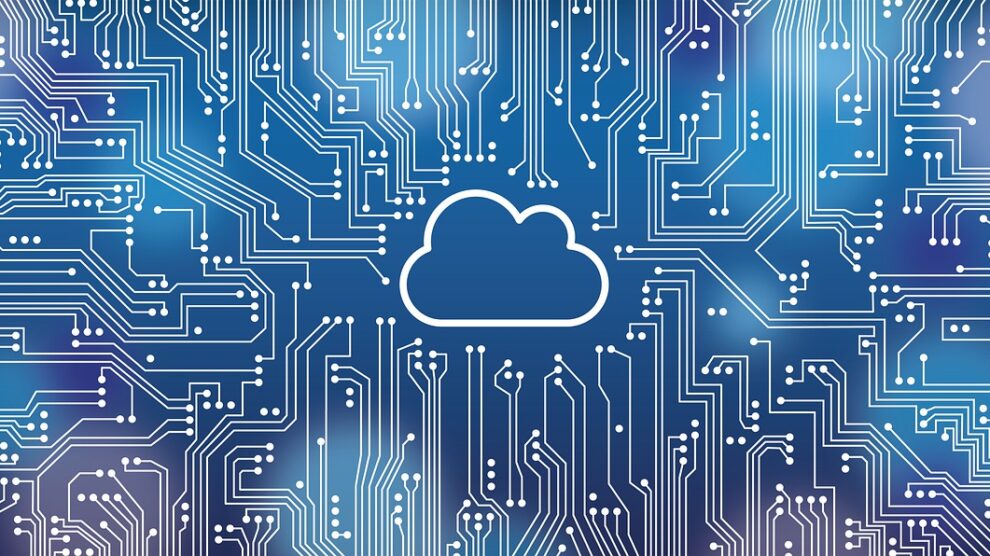Cloud computing is developing rapidly due to its inherent benefits over traditional computing methods. It is considered the backbone of every digital service from special media, streaming entertainment, connected cars, and IoT infrastructure. Businesses can adopt cloud computing trends to suit their corporate demands and requirements due to its ease of use. Therefore, business owners must stay updated about the cloud computing trends to utilize them to their benefit. Here are the 5 biggest cloud computing trends in 2022.
1. Containerization: Container-as-a-Service
Container in the language of computing is software that consists of all the essential elements bundled together to run a system effectively. Containerizations help to eliminate issues of errors and bugs by creating a package that includes the application code and other dependencies. Container-as-a-Service (CaaS) is a cloud-based service that helps software developers plant containerized applications on a given cloud infrastructure. This allows developers to build and deploy applications securely.
Therefore, containerization is beneficial for business as it will provide you with faster delivery, greater flexibility, modernization, agility, portability, and better life cycle management. According to experts, over 75% of global organizations will run on containerized applications.
2. The Internet of Things and Cloud Platforms
Cloud computing combined with the Internet of Things (IoT) is expected to create a hyper-associated world, one of the most awaited technological trends for the forthcoming years. According to IDC, the usage of IoT will reach the 80 billion mark by 2025. Therefore, it is expected that IoT is there only to increase and its integration with cloud computing will help connect an application with a device and its data, thereby establishing a comprehensive cloud ecosystem. Moreover, such platform-as-a-service (PaaS) supports building applications and services using IoT features.
3. Innovation with Edge Computing
Edge computing is a computation that functions at or near the user’s physical location or the spruce of data. It is an emerging cloud trend that involves building localized data centers for computation and storage at or near where it’s being gathered, rather than on a central location that might be thousands of miles away. This helps optimize internet devices and applications by bringing them closer to the data source. Edge computing helps to minimize long-distance client-server communication, thereby saving time and bandwidth with low latency. If you adopt edge computing for your business, you will gain the benefits of faster information processing and availability, thereby enabling the smooth functioning of intelligent operating systems. In the coming years, the trend of cloud computing will consist of IoT cloud solutions and edge computing to improve performance and deliver an enhanced user experience.
4. The Growth of AI and ML in Cloud Computing
AI or Artificial Intelligence and MI or Machine Learning play a vital role in developing recent technical aspects. These technological advancements help companies to perform their business smoothly. However, when such technologies are integrated with cloud computing, they can create wonders. Cloud computing can provide AI and ML high bandwidth and processing power to make both the technologies more strategic and data-driven. Do you have requirements for AI and ML to enhance your business further? Partner with us as at Green Apex our experts help you by addressing your demands and requirements for wide range of business objectives.
Cloud computing plays a significant part in the development of two emerging AI techs:
Innovative algorithms: These programs use machine learning to create anything from art to synthetic data. These algorithms are also able to train other AI programs.
Language modelling: Programs with increased accuracy to understand human languages, a tech projected to transform the way businesses interact with users.
When such technologies are combined with cloud computing, they can create innovative algorithms like generative machine learning. This will enable your business to be more data accurate as the machines will be able to understand and interpret human languages too!
5. Hybrid and Multi-Cloud Environments
The present businesses have two options, i.e., to store their data on pay-as-you-go public cloud solutions or highly customizable private cloud solutions. The former makes the data easily accessible and reduces the infrastructure cost for companies. The latter one store data on-premises, reduce possible downtime, and maintain high data transmission speeds. However, the hybrid cloud offers companies to adopt and use both solutions. Therefore, companies do not need to choose either of the two as they can access the benefits of both the cloud solutions. The most critical and client-sensitive data can be privately stored on-premise, and the more frequently accessed heavy files can be transferred to a public cloud provider like AWS and Azure. This enables companies to exist in a multi-cloud environment.
Multi-cloud environments offer access to public, private, and hybrid cloud platforms. This helps companies utilize the benefits of all three platforms, reduce operational cost and downtime, optimize performance, and fulfil the business goals. Notably, both hybrid and multi-cloud approaches reduce organizations’ operational complexity and establish a flexible remote work culture. Therefore, using both strategies will help you to optimize your business.
Key takeaways
Cloud computing is expected to fuel technology re-engineering and mark its imprints on both consumer and enterprise domains. Cloud computing offers solutions for businesses to survive, enhance their ROIs and service solutions portfolio, and create a new line of existing products. As stated by the data, cloud storage and computing solutions witnessed more than $332 billion in 2021. This figure is expected to reach over $400 billion by 2022. Therefore, we will see the gradual shift of focus from cloud tools deployment towards a more holistic usage of enterprise-wide cloud migration. If you want to expedite your business and integrate it with innovation, you may utilize the latest cloud computing trends.





